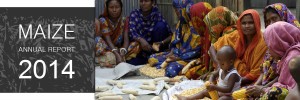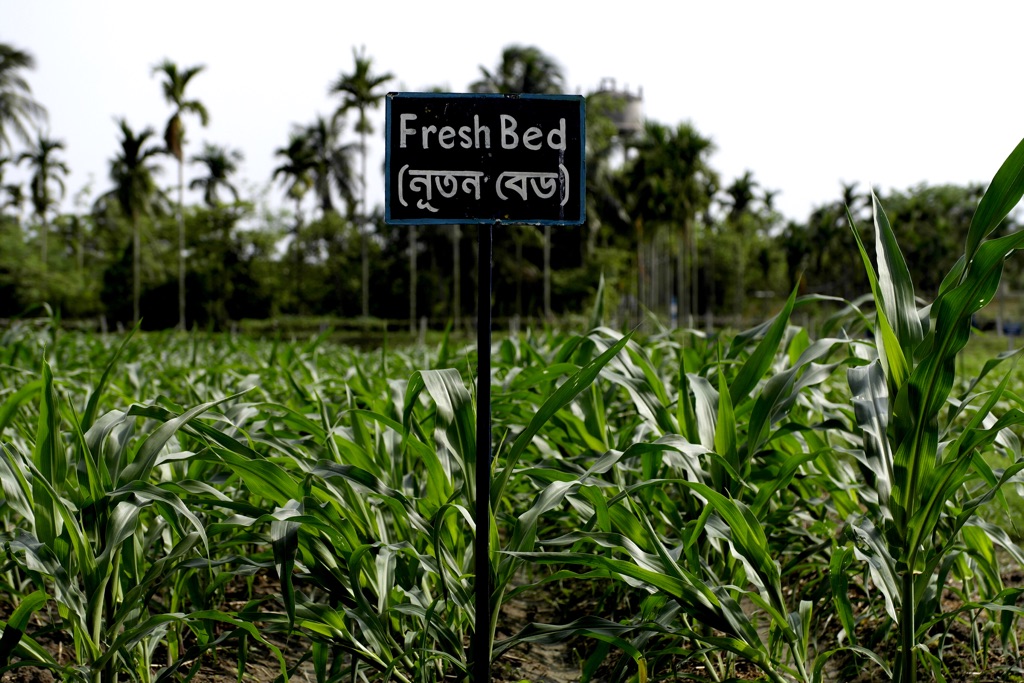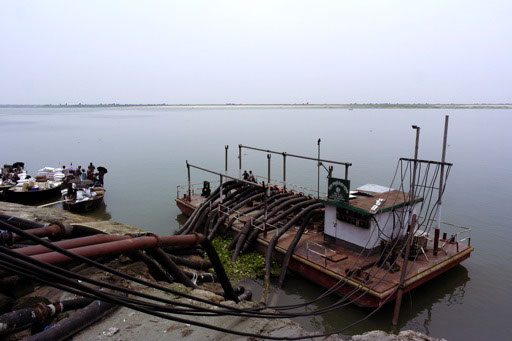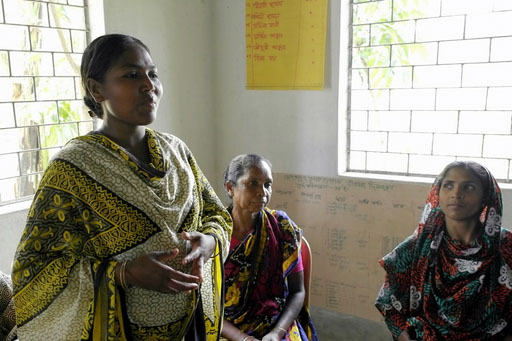
Transforming food systems in the eastern Gangetic plains

Transcending the boundaries of Bangladesh, India and Pakistan, lie the Eastern Gangetic Plains (EGP), fertile lands home to 300 million people, highly dependent on agriculture for their food security and livelihoods. The EGP area is crucial to future food security in South Asia, where production of rice, wheat and maize must respectively increase by about 1.1, 1.7 and 2.9 percent each year to meet food needs in 2050. Yet due to a lack of agricultural development, today the EGP contains the highest concentration of rural poverty found anywhere in the world.
It is known that conservation agriculture techniques such as zero till, strip till and dry seeding can improve rice, maize and wheat productivity, labor costs and water use while safeguarding the environment. Another option is for farmers to plant new crops at different times. A 2014 study in the Indo-Gangetic plains showed that maize had an eight times greater water productivity than rice, both using the most efficient conservation agriculture practices. Farmers can double their net income from maize production by intercropping, particularly with leafy vegetables.

The Sustainable and Resilient Farming Systems Initiative
The Sustainable and Resilient Farming Systems Initiative (SRFSI) is exploring the potential for such innovations to transform agriculture in the EGP, directly assisting 40,000 farmers, of them 30 percent women, to adopt more productive and sustainable farming practices.
More than that, it seeks to use the confluence of three borders and a deep understanding of farmers to understand how different circumstances affect the uptake and success of different innovations.
For this mode of transformative, participatory research, SRFSI relies on over 20 partners for their networks and expertize, including many Australian universities and local NGOs including market development and value chain actors.
While ACIAR (Australian Centre for International Agricultural Research) provides the funding, CIMMYT is responsible for coordinating the project. There are also links and continuities with other projects and research programs such as CSISA (Cereal Systems Intensification for South Asia) and CCAFS (Climate Change, Agriculture and Food Security).
In eight districts (Malda, Cooch Behar, Madhubani and Purnea in India; Dhanusha and Sunsari in Nepal and Rajshahi and Rangpur in Bangladesh) of the three-country study area, 40 nodes are identified, each representing a particular bio-physical and socio-economic environment with a distinct farming community.
The first step is to understand farmers and their farming system within each node, through data collection and focus group discussions with as representative a selection of farmers as possible. Once there is an understanding of the situation for farmers in the different nodes, three sets of trials follow:

- Core trials in all study sites test the long-term performance of different conservation agriculture practices, with farmer groups providing feedback on the results. In total, 191 core trials were performed in the summer of 2014, and over 360 in 2015.
- Opportunities trials assess innovations that could add value within the different farming typologies identified.
- Cropping systems trials assess the potential for crop diversification or systems-level interventions to sustainably increase productivity and thereby profitability.
SRFSI at work in Bangladesh
Across Bangladesh, on average there are just two crop plantings each year, when three or even four could be planted. Rice is a staple that is always planted during the monsoon season, often by flooding the land then planting wheat shortly after the rice harvest.
Efforts to increase farming output in Bangladesh have focused on irrigation, allowing water-hungry rice to be planted again in the dry season, but due to the sometimes alarming water table depletion in some locations, high fuel and labor costs, it is impossible for farmers to compete with cheaper and more environmentally-friendly options.
In the northwestern districts of Bangladesh, the NGO Rangpur-Dinajpur Rural Services (RDRS) is one of the partners working to implement the SRFSI in the field. RDRS works closely with the on-farm research division of BARI (Bangladesh Agricultural Research Institute).

Whereas water resources are underutilized in much of Bangladesh, in the Northwest this is not the case. Floating pump stations draw water from the vast delta to service a network of canals, thousands of deep tube wells have been sunk and farmers even have access to a pre-paid card system to purchase irrigation services. However, this leaves questions about how to further intensify production, and concerns for falling groundwater levels.
With over four decades spent working closely with the rural poor and their organizations in Bangladesh, NGOs such as RDRS are important partners and stakeholders in the work of MAIZE. Among other contributions to the SRFSI project, in 2014 RDRS reached out to 991 farmers (40 percent women) in field days and exchange visits, and carried out community consultations and trainings with a further 244 (20 percent women).

One of the community groups formed by RDRS has been active for five years, and focuses on a minority ethnic group. Men and women meet on a variety of issues, ranging from agriculture to early marriage, and even operate a small savings cooperative for investment.
Women’s group leader Kalpin Shorin explained how they had begun with home gardening, learning that it was possible to cultivate four crops for sale each year in a system developed by BARI. “We want to begin on a larger scale. Now we are using modern machines, and paying a little for their use.”
The groups provide a means for this marginalized community to improve their standing, and also promote the rights of women.
“Before the group, women in our community were not coming forward to speak in public, or even in the household,” said member Shona Mani Shoran, a change that was evident as Kalpin confidently addressed the entire community.
Groups and networks such as these not only provide a means for farmers to improve productivity and income, but also to have a louder voice in decision-making. Md. Rashadul Islam, the SRFSI project coordinator for RDRS, says that the success of their approach has led to government interest in replicating it elsewhere. “It’s a locally developed network, but its sound is heard from far away.”
Bangladesh, participation, SRFSI, sustainable intensification
